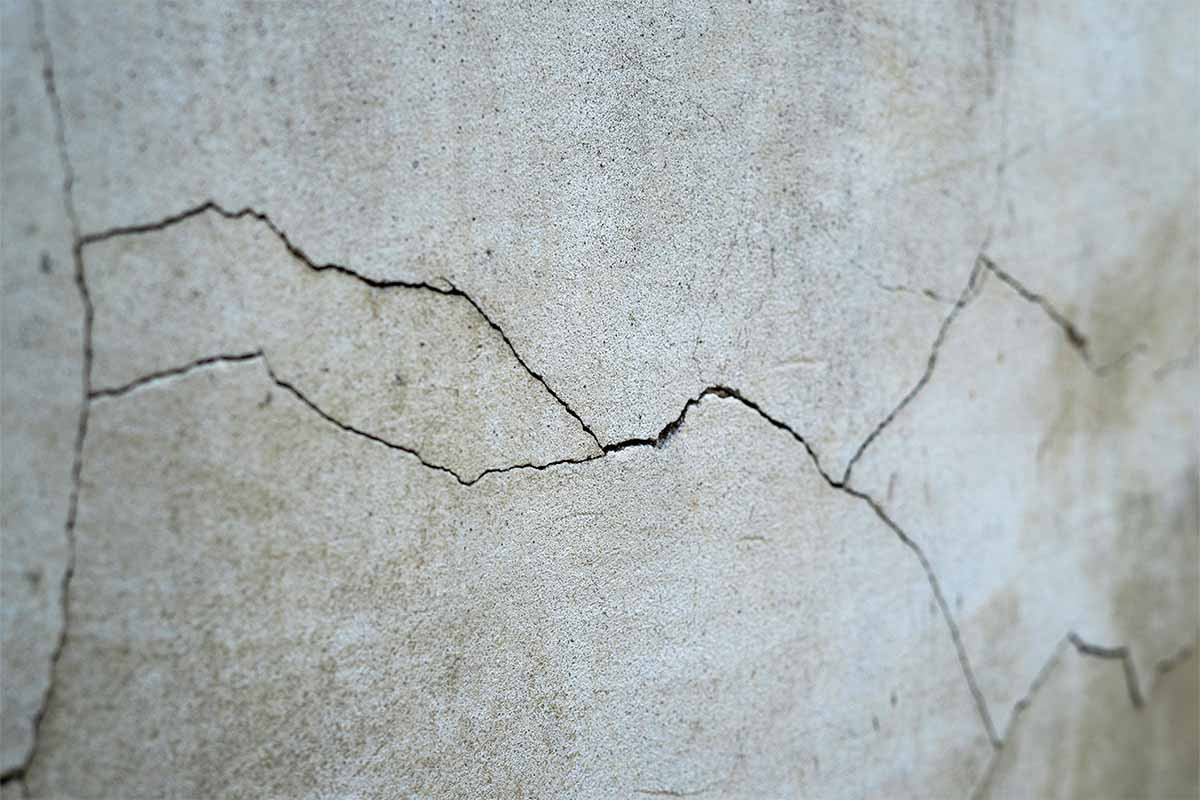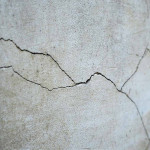3 Common Signs That You Need Foundation Repair in Old or Older Homes, Macedonia, OH
Do you own what would be considered an old or older home? These are homes that were built more than 50 years ago. Technology and building methods have changed a lot over the past few years. This means that many of these ‘older’ homes don’t have some of the features that have been introduced in the industry more recently.
If you are the owner of an old or older home, you may be familiar with the many joys and challenges that come with owning a piece of history. But as these homes age, they can also begin to show signs of structural problems that require foundation repair. Foundation issues can be challenging to diagnose and may not be immediately apparent to the untrained eye. Therefore, it is important to know the common signs that indicate foundation problems in older homes. In this article, we will explore common signs that you need foundation repair in old or older homes.
‘Older’ homes often begin to show the wear and tear of the years in structural problems that begin at the foundation level. The following are some common signs that your old home needs foundation repair.
1. The floors are uneven.
Uneven floors can manifest in a variety of ways. You may notice that items roll on the floor in a particular direction. You may also see that the doors and windows don’t shut properly or stick when you try to open them. Uneven floors may be the result of foundation movement. They may also be a sign that there is a water seepage problem in the foundation. The high humidity or moisture levels may be causing the wooden flooring to warp.
Uneven floors in older homes are a common sign that the foundation has shifted or moved over time. The shifting can occur due to various reasons such as soil movement, water damage, and the natural aging of the foundation.
One of the main causes of uneven floors in old homes is the settling of the foundation. As the home settles over time, the foundation may shift or move, resulting in uneven floors. The soil beneath the foundation may also shift, leading to an uneven distribution of weight on the foundation, causing it to settle or sink in certain areas.
Uneven floors can also result from inadequate construction methods that were common in older homes. In the past, builders may not have used proper building techniques, such as leveling the foundation, leading to an uneven floor.
It is important to address uneven floors in older homes as soon as possible, as they can cause further damage to the home. In addition to being a safety hazard, uneven floors can also lead to more serious issues, such as cracked walls and ceilings, damaged windows and doors, and even structural damage to the home.
If you notice uneven floors in your older home, it is best to seek the advice of a professional foundation repair contractor. They can assess the situation and determine the underlying cause of the uneven floors, and recommend the most effective solutions to fix the problem. The sooner you address the issue, the less likely it is to cause further damage to your home.
2. There are signs of moisture seepage.
Have you noticed signs of moisture seepage in your foundation? You may have seen water pooling in your basement or noticed water stains along the foundation walls or floor. A musty smell is also a sign of water seepage.
Moisture may be seeping into your foundation due to various reasons. You may have cracks in your foundation or a problem with your gutters that is causing runoff to pool near your foundation, for example. It is important to have the water seepage addressed as soon as possible to avoid flooding and extensive property damage.
Water damage is another reason why the floors may become uneven in older homes. Water can seep into the foundation and cause it to weaken or erode over time. As a result, the foundation may shift or become uneven, causing the floors to slope or sink. Additionally, high humidity or moisture levels can cause the wooden flooring to warp, leading to uneven floors. If the floors are not properly sealed, moisture can seep into the wooden floorboards and cause them to swell or shrink, leading to an uneven surface.
The second common sign that your old home needs foundation repair is signs of moisture seepage. Moisture seepage can present itself in a variety of ways and can lead to significant damage to your home’s foundation if left unaddressed. One of the most obvious signs of moisture seepage is water pooling in your basement. If you notice standing water or damp spots on the floor, this is a clear indication that water is seeping into your foundation. Water stains along the foundation walls or floor are also a tell-tale sign of moisture seepage.
Another common indicator of moisture seepage is a musty smell in your home. This is often caused by mold or mildew, which thrive in damp environments. If you notice a musty smell, it’s important to investigate the cause as soon as possible, as mold can pose a health risk to you and your family. The source of the moisture seepage could be several different things. One common culprit is a problem with your gutters. If your gutters are clogged or damaged, water can overflow and pool near your foundation. This can lead to moisture seepage and, over time, damage to your home’s foundation.
High humidity levels can also contribute to moisture seepage. If the humidity levels in your home are too high, it can create the perfect environment for mold and mildew to grow. This can further damage your home’s foundation and pose a health risk to you and your family.
It’s important to address signs of moisture seepage as soon as possible to avoid further damage to your home’s foundation. A professional foundation repair contractor can assess the extent of the damage and recommend the best course of action. This may include repairing cracks in the foundation, installing a sump pump or drainage system, or repairing or replacing damaged gutters. By addressing the source of the moisture seepage, you can protect your home’s foundation and ensure the safety and comfort of your family.
3. There are cracks in the walls.
Cracks may appear in your foundation or the walls of your home’s upper levels. You may also notice cracks in the floor as well as the door or window frames.
Not every crack is worth worrying about. Old homes often have hairline cracks that are just a sign of age and the natural settlement of the home. However, cracks that are wider than a quarter of an inch are often an indication of structural damage.
Another possible cause of moisture seepage is cracks in your foundation. Over time, the foundation of your home can settle and shift, which can cause cracks to form. These cracks can allow water to seep into your home and cause significant damage over time.
High humidity levels can also contribute to moisture seepage. If the humidity levels in your home are too high, it can create the perfect environment for mold and mildew to grow. This can lead to further damage to your home’s foundation and pose a health risk to you and your family. The appearance of cracks in walls is a common sign that a foundation needs repair. In an old or older home, cracks in the walls are particularly concerning as they may indicate structural damage. When assessing cracks in walls, there are several factors to consider.
Firstly, the location of the crack is important. Cracks in the walls near the corners of a home or at the intersection of walls may indicate foundation movement. Additionally, cracks that run diagonally or vertically may also be a sign of foundation problems.
Secondly, the size of the crack is important. In general, cracks that are less than a quarter inch in width are not a major concern, but wider cracks may indicate structural damage. If a crack is wider than a quarter inch, it is important to have a professional foundation repair contractor inspect the home as soon as possible.
Thirdly, the direction of the crack is important. Cracks that run horizontally may indicate a more serious problem than those that run vertically. Horizontal cracks may indicate that the walls are pushing outwards, which is a sign of significant foundation movement.
Lastly, the age of the crack is important. If a crack has been present for a long period, it may indicate that the problem has been ongoing and may require more extensive repairs. In contrast, if a crack has appeared suddenly, it may indicate a recent shift in the foundation and require immediate attention.
It is important to note that not all cracks in walls are caused by foundation problems. For example, cracks may be caused by settling or shifting due to changes in temperature and humidity. However, it is better to err on the side of caution and have a professional foundation repair contractor assess any cracks in walls to determine the cause and severity of the problem.
Ignoring cracks in walls can lead to further damage and more costly repairs in the future. In some cases, structural damage may even compromise the safety and stability of the home. Therefore, if you notice cracks in the walls of your older home, it is important to have them inspected by a professional foundation repair contractor as soon as possible.
What types of cracks exist?
Of course, there are. Different types of cracks can occur in buildings and structures. Here are some of the most common types:
Vertical cracks: these cracks run in a straight line from top to bottom and are usually caused by foundation settlement or shrinkage. They may also be due to soil movement or changes in temperature and moisture levels.
Diagonal cracks: These cracks usually appear at a 45-degree angle and may be due to uneven settlement of the foundation. They may also be due to soil movement or changes in temperature and moisture levels.
Horizontal cracks: These cracks run parallel to the ground and may be due to ground pressure or water damage. They can also be a sign of a serious structural problem.
Step cracks: These cracks look like a set of stairs and may be caused by settlement or shifting of the foundation. They can also be caused by water damage.
Hairline cracks: These are very hairline cracks less than 1/16 inch wide. They are usually caused by normal settlement or changes in temperature and humidity levels.
It is important to note that not all cracks are serious, but if you notice any cracks in your building or structure, it is best to have them inspected by a professional to determine the cause and whether any repairs are needed.
If you own an older home and notice any of the signs above, get in touch with a professional foundation repair contractor for an inspection of your foundation.
Finally, hiring a professional for foundation repair is highly recommended because they have the expertise, equipment, and experience to accurately diagnose the underlying cause of the foundation problem and provide effective solutions. Attempting to fix foundation problems on your own without proper knowledge and experience can potentially make the problem worse and cost you more money in the long run.
Professional foundation repair contractors can also offer warranties and guarantees for their work, giving you peace of mind and protection in case any issues arise in the future. Contact us today to learn more!
Contact the Professionals at Ohio State Waterproofing Today! 330-467-1055 or 800-800-9818





